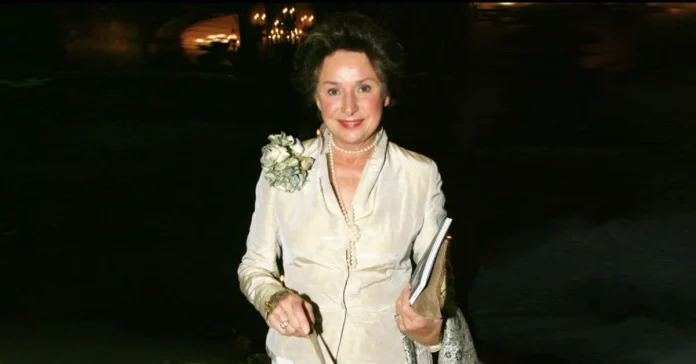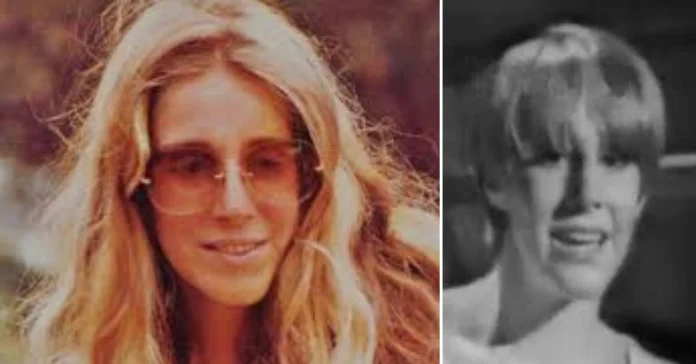Joe Bonamassa mixes soul and skill to bring blues to more people. His mix of soul and skill has brought blues to a new crowd. This guitar wizard started young and grew into a music star who sells out shows worldwide.
Who is Joe Bonamassa?
Born in New York on May 8, 1977, Joe fell in love with the guitar almost as soon as he could walk. His dad owned a guitar shop, which put young Joe around instruments from the start. At age 4, he picked up his first guitar, starting an amazing musical path.
Joe has made over 40 albums (both solo and with others), scored 24 #1 Billboard Blues albums, and played thousands of shows around the world. His music blends old blues with fresh sounds.
Joe blends old blues feeling with rock power. He’s inspired by B.B. King and Eric Clapton while adding his modern touch. This approach helps his music reach both longtime blues fans and newcomers.
Early Years
Joe started playing guitar at an incredibly young age. By 7, he was playing songs by Stevie Ray Vaughan and Jimi Hendrix—songs that challenge most adult guitarists. His talent was so clear that by age 12, he opened for blues legend B.B. King, earning the nickname “Little Smokey Joe” from fans amazed by his skills.
Joe spent hours daily on the guitar. His parents drove him to shows across New York State. As a young teen, he formed his first band, Smokin’ Joe Bonamassa, playing in clubs he was too young to enter except when performing.
This helped him find his style early—a unique sound. Even as a teenager, you could hear his style forming, with his notes, feeling in his playing, and a tone that stood out in any mix.
Big Moments in Joe’s Career
Joe’s career has many high points, but these five stand out:
- Opening for B.B. King at age 12: This early chance shaped how Joe performs. King told young Joe, “You play pretty good, but you need to keep at it.” Joe took this advice seriously.
- Releasing “A New Day Yesterday” in 2000: His first solo album showed Joe as a serious blues-rock artist. It displayed his skills and blues knowledge while hinting at future growth.
- Playing at Royal Albert Hall in 2009: This concert had Eric Clapton joining Joe on stage. The live album and video introduced him to more fans, confirming his place among the top guitarists.
- Forming Black Country Communion in 2010: This group, with Glenn Hughes, Jason Bonham, and Derek Sherinian, let Joe explore heavier rock sounds. Four successful albums showed his ability to work with other top musicians.
- Selling out Red Rocks Amphitheatre: Playing this famous venue marked Joe’s rise from club performer to stadium headliner. The stunning setting matched his powerful performance.
Joe’s often featured in top guitar magazines. His albums usually hit #1 on the Billboard Blues charts. Beyond his virtuoso playing, he’s known for his incredible collection of vintage guitars and gear kept at his “Nerdville” home.
Joe created a sustainable independent business model that other musicians now follow. By controlling his career rather than chasing trends, he’s proven that musicians can succeed on their terms.
He preserves guitar history through his Keeping The Blues Alive Foundation and personal collection of historic instruments that might otherwise disappear into private hands, never to be played again.
What does Joe’s Guitar Sound Like?
Joe’s guitar playing stands out because:
- Control of dynamics: Joe can play whisper-quiet or scream-loud within the same solo. This control creates emotional moments that grab listeners.
- Clean technique: Every note has a purpose. Unlike guitarists who play fast just to show off, Joe’s speed serves the song. His clear picking makes every note sound clean, even during fast parts.
- Old-school tone with modern power: Using old-school guitars and tools, Joe creates sounds from the classic blues rock era that cut through today’s sound systems with clarity and punch.
- Story-like solos: Joe builds solos like stories—with beginnings, middles, and endings. This approach keeps listeners interested through his longest guitar parts.
- Mixing different styles: Though based in blues, Joe draws from rock, jazz, country, and classical music, creating a sound that you can instantly tell is his.
- Making his guitar sing: Joe phrases his guitar lines like a great singer would. This makes his instrumental sections as memorable as the vocal parts.
Must-Hear Songs
These seven tracks showcase Joe’s best work:
- “Blues Deluxe”
- “Sloe Gin”
- “The Ballad of John Henry”
- “Mountain Time”
- “Drive”
- “Dust Bowl”
- “Just Got Paid”
Joe’s key albums include “Blues Deluxe” (2003), “You & Me” (2006), “Sloe Gin” (2007), “The Ballad of John Henry” (2009), and “Royal Tea” (2020). Each record shows his growth as both a guitarist and a songwriter.
Live Shows
Joe shines on stage, where his guitar skills truly come alive:
- Royal Albert Hall shows
- Red Rocks performances
- Keeping The Blues Alive At Sea cruise
- Guitar Circus Tour
- Three Kings Tour
The Joe Bonamassa tour 2025 features stops across North America, Europe, and Australia. Fans call him “one of today’s top live performers” with shows that are “a favorite for music lovers worldwide.” According to his website, shows typically run over two hours, with Joe playing up to 20 songs from his many albums.
Band Members & Collaborations
Joe surrounds himself with top-level musicians who match his skills:
- Anton Fig (drums): Played with the CBS Orchestra, Fig brings rock-solid timing and feel to Joe’s band. His ability to play both powerfully and softly supports Joe’s dynamic range.
- Michael Rhodes (bass): A Nashville session legend, Rhodes provides the foundation that lets Joe explore freely. His groove creates the perfect backing for blues rock.
- Reese Wynans (keyboards): As a former member of Stevie Ray Vaughan’s Double Trouble, Wynans adds a real blues feel. His organ and piano add richness to the band’s sound.
- Beth Hart (vocalist): Though not a regular band member, Hart’s work with Joe has produced several great albums. Their chemistry creates blues magic, with Beth’s powerful voice matching Joe’s guitar.
- Rock Candy Funk Party: This side project lets Joe explore funk and jazz fusion. The band’s loose, jam-based approach showed a playful side to his musicianship.
- Black Country Communion: This supergroup with Glenn Hughes, Jason Bonham, and Derek Sherinian let Joe embrace his classic rock side, different from his solo blues work.
Guitars and Tools
The Joe Bonamassa guitar collection ranks among the world’s most impressive:
- 1959 Gibson Les Paul “Skinner Burst”: This prized guitar produces the warm, singing tone heard on many recordings. Worth over $500,000, it represents the peak of vintage guitar collecting.
- 1951 Fender “Nocaster”: One of the earliest Telecasters gives the cutting twang heard on songs like “Dust Bowl.” Its worn finish shows decades of playing history.
- 1955 Gibson Les Paul “Goldtop”: With P-90 pickups, this guitar gives Joe a rawer sound than his other Les Pauls and appears often during live acoustic segments.
- Gibson ES-335: For a tone between solid-body punch and hollow-body warmth, Joe turns to this semi-hollow classic. Its versatility works for both rhythm and lead playing.
- Fender Stratocaster: Though known mainly as a Les Paul player, Joe often uses Strats for their distinctive quack and sparkle. His custom shop models feature vintage specs with modern reliability.
- Epiphone Joe Bonamassa Signature Les Paul: Created as an affordable option for fans, this guitar recreates features of Joe’s vintage instruments and sold out quickly when first released.
Beyond guitars, Joe’s amp collection includes vintage Marshalls, Fenders, and Dumbles that help create his signature tone. His pedalboard stays surprisingly simple, focusing on boost, overdrive, and delay rather than complex digital effects.
What Makes Joe Stand Out
Joe earned his fame through guitar excellence and hard work. Unlike overnight stars, he built his career show by show, releasing albums regularly while touring over 200 days yearly.
What sets Joe apart from many great guitarists is his business smarts. Rather than signing with a major label, he co-founded J&R Adventures with manager Roy Weisman. This independent approach gave him complete creative control and ownership of his music.
Though naturally gifted, Joe’s success comes from dedication as much as talent. His early training included formal lessons where he learned music theory and proper technique, knowledge that many self-taught blues players lack.
His father played a key role, introducing him to records by British blues players like Eric Clapton and Jeff Beck. These sounds showed young Joe that blues could be played in different ways while respecting its American roots.
Joe gained stage experience early. Playing real shows as a child built a comfort on stage that many musicians never achieve. These early performances taught him how to read an audience and build setlists that keep energy flowing through concerts.
Personal Life
Behind the stage presence, these facts reveal Joe as a person:
- Beyond guitars, Joe collects vintage watches, amplifiers, and music items. Friends describe his home as “part museum, part music store.”
- Despite his fame, Joe keeps a quiet personal life, splitting time between Nashville and Los Angeles when not touring.
- Joe wakes before dawn, using morning hours for practice and business. This discipline fuels his productivity as both a musician and a businessman.
- Self-described as “coffee obsessed,” Joe travels with special brewing equipment, showing his attention to detail in music.
- When not playing guitar, Joe takes photographs during his travels, sometimes sharing landscapes from tour stops on social media.

Smart business decisions have built Joe’s financial success. Besides music and tours, he’s created income through signature guitar models, teaching courses, and merchandise.
His investment in the Keeping The Blues Alive Foundation shows he cares about music education. This non-profit provides instruments and lessons to schools, helping future generations discover blues music. Recently, he created an extension called Fuelling Musicians, providing $1500 checks to struggling musicians affected by the pandemic.
Final Thoughts
Joe Bonamassa shows what blues rock is all about—honoring tradition while pushing boundaries. From child prodigy to guitar collector to business innovator, his journey shows what happens when real skill and effort.
For guitar fans, music lovers, or anyone who appreciates seeing a master at work, Joe delivers performances that honor blues history while creating new chapters in that ongoing story.
Want to experience the magic yourself? Check out the upcoming Joe Bonamassa tour 2025 dates and join his newsletter for exclusive guitar insights and concert announcements.




